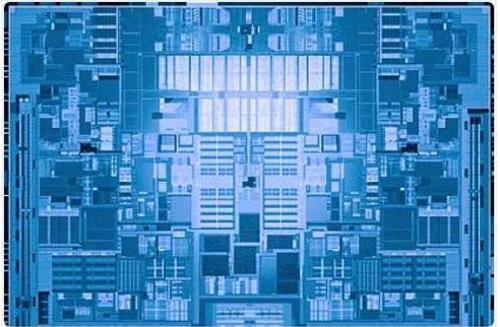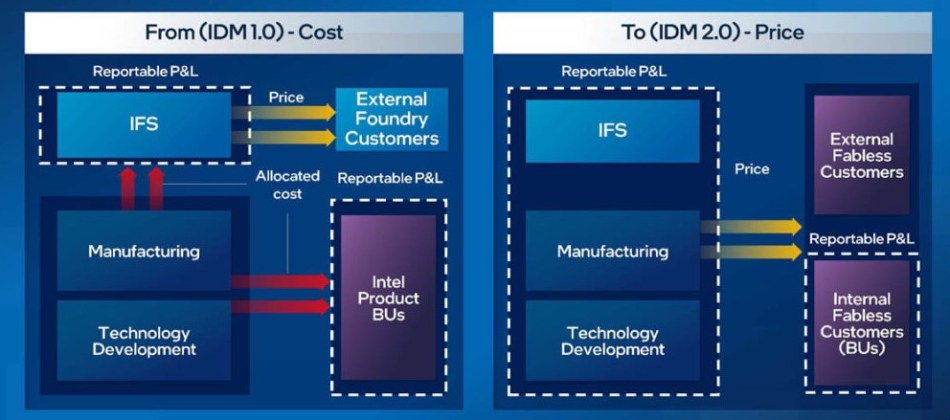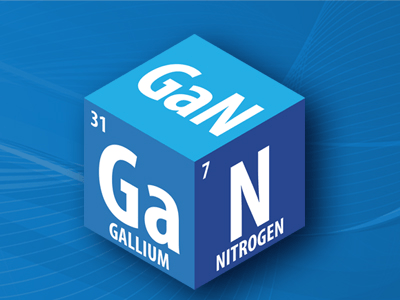
A brief history of gallium nitride (GaN) semiconductors
- ICDesign
- 2023-09-23 23:01:22
Gallium nitride (GaN) and its wide bandgap cousin silicon carbide (SiC) have started to disrupt power electronics. Ironically, just a few years ago, GaN was considered useless as a semiconductor, mainly because GaN is a highly imperfect crystal.
So, how scientists and engineers overcame the odds and made GaN workable first for LEDs and RF designs and then for power electronics applications ranging from renewable energy to power supplies to electric vehicles (EVs). Here is a sneak peek into the origins of GaN technology.
Early history
The existence of gallium (Ga) was first predicted by Dmitri Mendeleev in 1871, and a few years later, in 1875, it was discovered by Paul-Émile Lecoq de Boisbaudran in Paris. The next breakthrough came 57 years later when the first polycrystalline GaN material was synthesized by flowing ammonia (NH3) over liquid gallium.



In 1932, GaN material was synthesized at George Herbert Jones Laboratory by reacting gallium metal and ammonia at a very high temperature of 900⁰C to 1,000⁰C. And 37 years later, in 1969, H.P. Maruska and J.J. Tietjen reported on the growth of single-crystal film of GaN. They used a hydride vapor phase epitaxy (HVPE) process for the first time to deposit GaN on a sapphire substrate.

Figure 1 Maruska and his team developed a single crystalline GaN layer in 1969. Source: Science Direct
A few years later, in 1972, J.I. Pankove, E.A. Miller, and J.E. Berkeyheiser developed a GaN-based blue light detector. However, while it produced blue luminescence at room temperature, its power efficiency was poor. During the 1980s, the emergence of growth technologies like metal-organic chemical vapor deposition (MOCVD) and molecular beam epitaxy (MBE) renewed efforts on the quest for commercial GaN use. Both MBE and MOCVD technologies are now used in fabricating GaN devices, depending on the application.
Blue LED breakthrough
As mentioned above, GaN-based LEDs were first developed in 1972 using GaN doped with magnesium, the compound that emits blue light in the form of an LED. However, while these were the first LEDs capable of emitting a blue-violet color, they were not initially bright enough for commercial use.
In 1991, Shuji Nakamura, then a researcher at Nichia Chemical in Japan, and his two colleagues at Nagoya University, Isamu Akasaki and Hiroshi Amano, patented a GaN-based method to produce high-brightness blue LEDs. Two years later, in 1993, they demonstrated these high-brightness blue LEDs, which doped GaN with excess amounts of magnesium.
The LED-based lighting applications required three primary colors—red, green, and blue (RGB)—but there was no practical technology to manufacture blue LED. The blue LED became the final ingredient in the advent of RGB LEDs and eventually paved the way for white LEDs and color-changing LEDs.
The commercial availability of high-brightness blue LEDs became an infletion point for the electronics industry. It first led to a renaissance of lighting applications, where blue LEDs became the precursor of solid-state lighting, starting to replace inefficient incandescent lighting and cathode ray tube (CRT) televisions and monitors.

Figure 2 The three blue LED pioneers won the Nobel Prize for paving the way for full-color LEDs and blue laser technology.
Subsequently, GaN-based blue LED technology played a significant role in the development of Blu-ray optical discs, replacing DVDs as the default method of data storage for visual media. So, after all, Blu-ray stands for something specific. Blue LED pioneers Akasaki, Amano, and Nakamura won the 2014 Nobel Prize in Physics for the vast influence of their work on GaN and solid-state lighting and data storage.
Beyond photonics
In 2004, Eudyna Device Inc. in Japan introduced GaN-based high electron mobility transistor (HEMT) as depletion mode transistors for RF applications. The HEMT structure was based on the phenomenon first described by Takashi Mimura and his team in 1975 . Next, in 1994, M. A. Khan and his colleagues demonstrated unusually high electron mobility described as a two-dimensional electron gas (2DEG) near the interface between an AlGaN and GaN heterostructure interface.
Khan’s group also demonstrated the first GaN/AlxGaN heterostructure grown by MOCVD. The electron mobility of this heterostructure was 12 times higher at room temperature compared to bulk GaN of the same thickness. These discoveries underscored GaN’s potential in power electronics. For instance, 2DEG, which has low on-resistance, high current capabilities, and high-power densities, played a vital role in improving the performance of GaN-based power devices.
Eudyna monetized this work to produce benchmark power gain in the multi-gigahertz frequency range. A year later, in 2005, Nitronex Corp. introduced the first depletion-mode RF HEMT transistor made with GaN grown on silicon wafers. That’s when GaN RF transistors began making inroads in RF designs, especially in RF infrastructure applications that needed their high-efficiency, high-voltage capabilities. However, GaN RF transistors had been limited by device cost as well as the inconvenience of depletion-mode operation.
So, work began on enhancement-mode GaN transistors, also called GaN FETs, by growing a thin layer of GaN on the aluminum nitride (AIN) layer of a standard silicon wafer using the MOCVD technique, in which the material layers are created through highly controlled chemical reactions among gasses released into a chamber. The AIN layer acts as a buffer between the substrate and GaN.

Figure 3 The GaN FETs built on top of standard silicon wafers maintain costs like silicon MOSFETs but offer superior electrical performance. Source: EPC
In 2009, startup Efficient Power Conversion (EPC) unveiled the first enhancement-mode GaN on silicon wafers designed specifically as power MOSFET replacements. These field effect transistors (FETs) opened the door for GaN to be produced in high volume at low cost using standard silicon manufacturing technology and facilities. Soon, Fujitsu, MicroGaN, Panasonic, and Texas Instruments joined the fray and started developing their own versions of GaN devices.
GaN transistors and ICs
The enhancement-mode GaN transistors were designed to replace power MOSFETs in applications where switching speed or power conversion efficiency is critical. After their inception, work began on GaN power ICs, which would monolithically integrate a GaN FET, GaN-based drive circuitry, and circuit protection into a single surface-mount device.
This integration led to a gate-drive loop with essentially zero impedance, improving efficiency by virtually eliminating FET’s turn-off losses. The work on creating low-voltage GaN power ICs began at the Hong Kong University of Science and Technology (HKUST), and the first devices were demonstrated in 2015.
Then, in 2016, HRL Laboratories in Malibu, California demonstrated a GaN power IC to realize the full benefits of GaN electronics at a low cost. It’s worth mentioning here that leading GaN player Navitas Semiconductor was founded on a trailer in the parking lot of HRL in 2013. Next year, co-founders and former HRL executives Gene Sheridan and Dan Kinzer licensed the GaN power electronics technology from HRL.
Production of commercial GaN power ICs began in 2018.
Related Content
SiC and GaN: A Tale of Two Semiconductors“Navitas Presents” to focus on GaN at CES 2023GaN’s applications roadmap spotted at CES 2023The diverging worlds of SiC and GaN semiconductorsIntegrated GaN Half-Bridge Delivers MHz PerformanceA brief history of gallium nitride (GaN) semiconductors由Voice of the EngineerICDesignColumn releasethank you for your recognition of Voice of the Engineer and for our original works As well as the favor of the article, you are very welcome to share it on your personal website or circle of friends, but please indicate the source of the article when reprinting it.“A brief history of gallium nitride (GaN) semiconductors”










